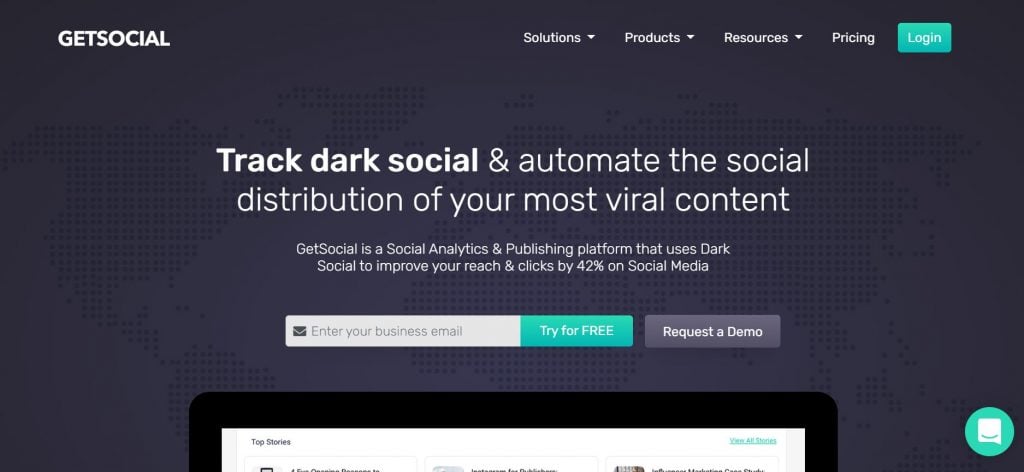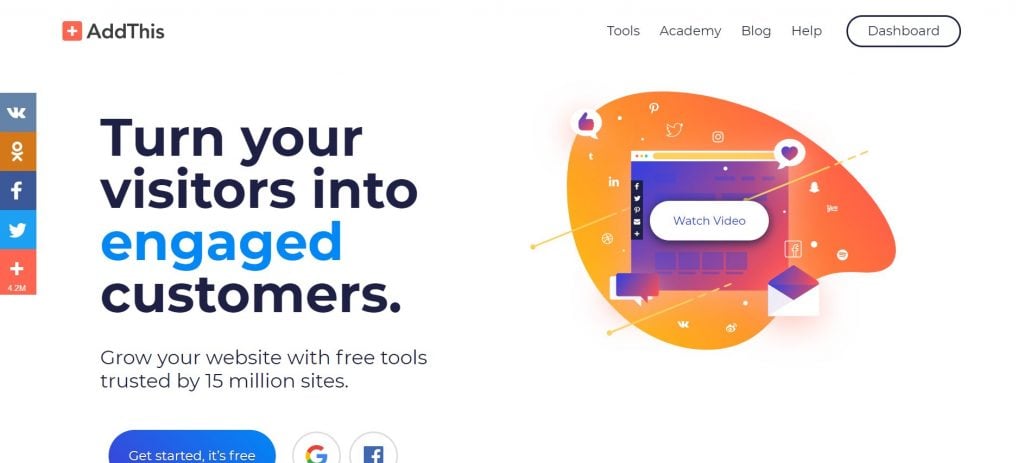It starts with an interesting post that you saw in your social media feed on “10 Ways to Lose 3 Pounds in a Week.” The post immediately catches your attention and raises your hopes. And you think that your friend, Susan, would love it because she has been struggling to shed some extra pounds.
That’s when you decide to copy the link and send it to her on WhatsApp. After all, who checks their FB or Instagram messages regularly, right?
Susan loves the post and forwards it to her Gym’s WhatsApp group. They all read it, apply the wisdom, and share it with their friends.
Little do they know that they have all participated in the practice of dark social content sharing.
Dark Social: Everything You Need to Know:
What is Dark Social?
Dark social is a term coined by Alexis Madragal to describe the practice of sharing content that cannot be tracked by web analytics tools. This is content shared via email or private messaging apps that cannot be attributed to a known source by web analytics programs.
Any website visit from a link shared in email, WhatsApp, Facebook, Slack, etc. is counted as a visit, but the analytics programs can’t attribute it to a particular source. Consequently, these visits become invisible, instead of being counted as social or referral traffic. Hence the term “dark social.”
If a person uses secure browsing, then those visits also fall under the umbrella of dark social.
Why Does Dark Social Matter?
This matters because marketers can’t measure the success of their campaigns if they don’t know which channels performed the best. Dark social sharing skews the numbers and people end up getting a distorted picture.
This type of traffic inflates the “direct traffic” metric because the actual sources can’t be tracked. So, you have no idea where you’re actually getting the most traffic from.
Dark social traffic is rising and now comprises a majority of all social traffic. In fact, according to a 2016 study by RadiumOne, dark social constitutes 84% of all social sharing activity.

Dark social is the largest traffic source for most websites, but companies are not even tracking it. Does this shatter your pretty picture of the effectiveness of website analytics? It should.
So, what does this mean?
Does it mean that all your website analytics and metrics are futile when you can’t even track your largest traffic source? Or that you should just give up because you just can’t track dark social media sharing?
Well, not really.
It’s not completely impossible to track dark social sharing. There are ways to track this data and even tools available to do it for you.
So, let’s deep dive into it and see what all you can do to track these allegedly “invisible” shares.
Effective Ways to Track Dark Social Media Sharing
There are several ways you can either avoid dark social altogether or at least track the share of traffic coming from these sources.
Here are some of the most effective ways to do that.
Google Analytics
Under normal settings, even Google Analytics fails to identify and report dark social traffic and may end up categorising it as direct traffic. This does not show exactly how those website visitors heard about the website and reached it.
This attribution error prevents companies from gaining valuable insights into their best traffic sources. After all, they are creating useful, shareworthy content, but that does not reflect in their metrics.
However, there is a way around this limitation. If you make a few tweaks in your Google Analytics settings, you can get more insights into your dark social traffic.
As we already discussed, dark social traffic gets wrongly categorised under direct traffic. So, if we can find a way to segment it or make more sense of it, then we can find the dark social traffic hiding in plain sight.
Here is a step-by-step process to tweak your Google Analytics settings to see dark social traffic.
1. Click on the “Audience” tab at the left side of the dashboard and then select “Overview.”

2. It will open the audience overview tab. Click on “Add Segment.”

3. Select the “Direct Traffic” option and unselect all other items on the list. Then click on “Apply” to save the changes and apply “Direct Traffic” segmentation to all of your metrics.

4. Now, to dive deeper into the direct traffic and narrow it down, click on the “Behavior” tab on the left side of the dashboard.

5. Under the “Behavior” tab, select “Site Content” and then select “All Pages.”

6. Now go to the search bar and click on the “advanced” button right next to it.

7. You will see an “Include” button, next to the page button. Change that to “Exclude.”

8. Now comes the most important part. In the search box on the right, you need to add all of the easy-to-remember page URLs. These URLs are the ones that people can actually type to reach your website. Click “Apply” after you have added all such pages.

Doing this will exclude all pages that people can actually reach directly and will leave you with pages that have a difficult URL structure.
What this actually does is exclude all actual “direct traffic” and leaves you only with the dark social traffic. This is because people can’t possibly remember the complex URLs and type it. So, they must have clicked on a link to reach those pages.
In all probability, this remaining data is your dark social traffic and does not include any direct traffic. This way, you can get actual insights into how much traffic is coming via dark social content sharing.
Social Sharing Buttons

Using social sharing buttons with all of your content does not actually track dark social sharing, but avoids it altogether. Having these buttons makes it easy for people to share your content and avoids the need to copy paste the link to share.
The content-sharing activity using these buttons can be tracked and hence you will be able to attribute the traffic to the right sources.
Just make sure that you include all the popular sharing options, including sharing via WhatsApp and email. Sometimes, people resort to copy-pasting a link when there is no sharing option available for the app that they use.
Also, try to make these buttons bigger and place where they are easily visible.
Use UTM Codes
You can attach an Urchin Tracking Module or UTM code to each different URL, to track the link-sharing activity better. These codes help Google or any other analytics software to determine the exact content source.
This method is especially useful when you want to calculate a specific campaign’s ROI. UTM tagged links will tell your analytics software what visits are associated with a campaign.
Use Dark Social Tracking Tools
There are several tools that can help you track dark social content sharing or manage your social sharing in a way to avoid dark social.
Here are some of the popular tools that you can use:
1. GetSocial

This tool provides dark social tracking as well as dark social analytics. It can help you track all of your shares, including those shared via private messaging channels.
It provides a code that you can copy paste on your website’s header. You can then activate it by going to the “address bar tracking” app. This allows you to track all of your content, even the dark social content.
It also provides social sharing buttons that you can use to encourage sharing using those instead of copy-pasting the links.
2. Po.st

This tool also provides social sharing buttons that you can add to your website. You can then track all of the shares using those buttons.
It also has a link shortener that not only shortens the URL but also tracks it. You can use this feature for any page whose traffic you want to track. It also provides detailed analytics for that link and tells you the exact traffic sources and what activities drove that traffic.
3. AddThis

This tool is similar to GetSocial in that it also provides social sharing buttons and a code to track your shares.
All you need to do is make an account and download the code, plugin, and app. Then you apply the code to your website and start tracking your shares.
Final Thoughts
Dark social traffic is your largest traffic source and is too big to be ignored. Dark social sharing prevents companies from measuring the actual effectiveness of different traffic sources. This is because all of this traffic gets attributed to direct traffic. This severely distorts the actual picture where the traffic is actually being driven from sources that your analytics software is not able to track.
So, use the techniques mentioned in this post to track dark social traffic using Google Analytics or dark social tracking tools. Or, you can use social sharing buttons to provide people with an easier way to share. This can help eliminate dark social sharing altogether.
If you like this post and want to share it, use our social sharing buttons to share it with your friends.



